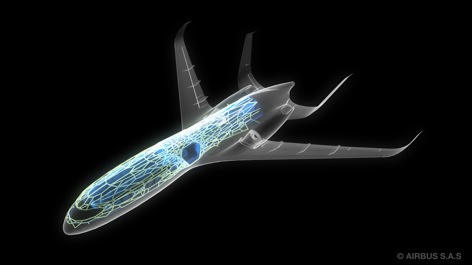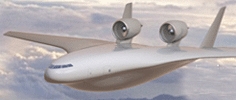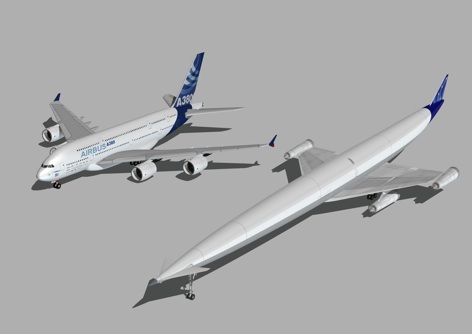The first time I got on a plane, it was a Boeing 707. It was probably pretty old — not that I was taking much notice of that, I was eight years old — but still very much airworthy and proving a servicable workhorse for the charter holiday routes of the mid-1970s.
As it happens, the most recent plane I’ve been on-board was a Boeing 787, probably the world’s most advanced civil aircraft. It didn’t leave the ground — it was on a publicity tour of the UK, being shown off to dignitaries and the press — but we visitors were given a tour of the plane and told about all the advances and new technology on board. That was quite a good thing, because to the untrained eye, as even the most ardent Boeing aeronautical engineer will attest, a 787 doesn’t look all that much different to a 707.
The fact is that aircraft haven’t changed much, in terms of their general outline and layout, for the past 30 years or so. They all have tubular fuselages with a rounded nose, give or take the odd bulge on top. They all have wings set halfway back on the bottom of the fuselage, with a swept-back leading edge and a straighter trailing edge, and the majority have engines mounted under the wing. They all have a single vertical fin and tailplanes mounted on the fuselage.
Moving away from this design is known in the civil aerospace sector as ‘breaking the paradigm’. So far, the only aircraft to break the paradigm successfully has been Concorde; but if you take a look at any of the large aircraft makers’ websites, you’ll see a section which discusses where aircraft design might go in coming years. There will be pictures of some startlingly-different looking planes: flattened, aerodynamic blended-wing bodies; tail-less flying wings; open-rotor engines; even variants on biplanes, with one set of wings swept back from underneath the front of the fuselage joining at the tip with another set swept-forward from the top of the rear.
So what’s it going to take to break the paradigm again? According to some of the speakers at a Green Aviation symposium held yesterday at Imperial College, it might happen relatively soon.

Alan Epstein, head of technology and environment for engine-maker Pratt & Whitney, pointed out that one thing that has changed about planes over the past decade or so is the size and shape of the engine. Making the fan at the front larger increases the efficiency of the engine, which in turn means that the core of the engine — the bit behind the fan — can be smaller, as it has to burn less fuel; the latest engine design to take to the skies, the geared turbofan, allows the front fan to be made even larger by enabling the fan to turn slower than the turbine shaft in the engine core. ‘We’re making big advances in efficiency, about 2 per cent per year,’ he said. ‘And for those people who say that 2 per cent per year isn’t very much, I say: haven’t you heard of compound interest?’
But this will have a knock-on effect, he said. ‘When we went to Airbus with our newest geared turbofan engine for the A320, they were concerned that it wouldn’t fit under the wing when the plane was on the ground,’ Epstein said. Airbus’s engineers worked out how to do it — a combination of a taller undercarriage and increased dihedral, or up-angle — on the wing. But engine-makers like P&W are looking at even bigger fans for future geared turbofan engines. ‘The next generation, fifteen to 20 years down the line, might well be too tight,’ he said. ‘And that’s when we’d have to look at breaking the paradigm.’

But don’t expect too much. Blended-wing bodies are unlikely to take off as passenger aircraft, because they take a long time to evacuate; moreover, passengers don’t like being too far from a window, and airports are set up for boarding and disembarking passengers from the familiar aircraft configuration.
So, the aircraft of the next decade might well have its engines mounted to the rear —much like older models such as the Tristar and DC10. This could allow designers to change the shape and construction of the wing, possibly blending it more into the fuselage shape or making a combined wing-and-tailplane design. The broader, flatter fully blended-wing body, if it is built, is more likely to be a freighter or military transport.
Personally, I’m still rooting for the return of the Zeppelin. Everything’s more stylish with airships. Or maybe there’s hope for a trans-Pacific Ekranoplan, or a suborbital, hypersonic air-breathing rocket-turbojet hybrid? I’m not giving up hope of that sci-fi world I was promised.











Water Sector Talent Exodus Could Cripple The Sector
Maybe if things are essential for the running of a country and we want to pay a fair price we should be running these utilities on a not for profit...